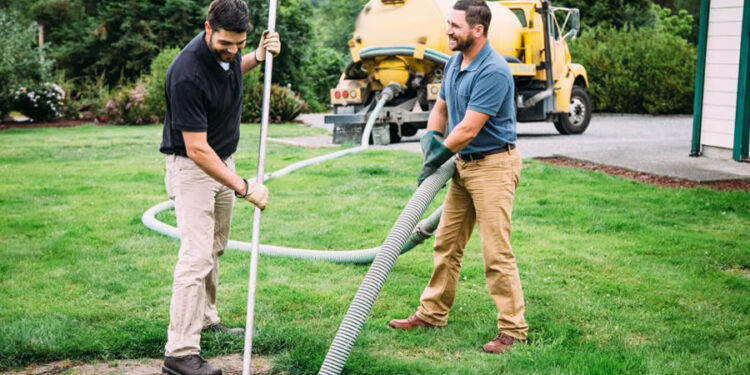People usually don’t notice their septic tanks working to help keep their plumbing systems functioning properly and their homes clean and safe. They don’t need to. These systems generally do their jobs quietly in the background without requiring a great deal of time and attention. Still, septic systems do need a certain amount of upkeep. Without it, they’ll eventually fail. When they do, they can lead to a long list of problems, not the least of which are home damage and exposure to dangerous pathogens.
One of the most important aspects of maintenance is routine septic cleaning. This process entails removing buildup inside septic tanks. It works in tandem with pumping to keep septic systems working the way they should, and it offers a range of health and hygiene benefits.
What Is Septic Tank Cleaning?
As mentioned, septic tank cleaning removes buildup that develops in septic tanks over time. Professional septic system cleaners use specially designed vacuum trucks to pump solids out of your tank. From there, they wash the inside of the tank and scrape away residue that’s clinging to the walls and bottom. That leaves your tank as clean and empty as possible so it can do its job properly.
What Are the Health and Hygiene Benefits of Septic Tank Cleaning?
When residue builds up in a septic tank, even regular pumping may not be enough to keep it from overflowing. Buildup can block the flow of wastewater, which may lead to sewage backups inside your home. Having raw sewage in your sinks, tubs, or toilets is far more than an an inconvenience; it’s a serious health hazard. It can expose your family to numerous harmful bacteria, viruses, and parasites as well as other contaminants. Removing the solids that cause blockages helps prevent backups in your home and the problems they cause. That’s only the beginning, though.
Protecting the Water Supply
Septic systems include drain fields that are designed to allow wastewater to filter naturally through the soil. Along the way, the soil removes contaminants and leaves the water clean and safe. Without proper maintenance, the system may not work the way it’s supposed to. That may cause untreated waste to make its way from your system to the water supply. If so, it can contaminate nearby steams, lakes, and ponds. It may also contaminate local wells. With that being the case, your septic system could be exposing countless people and animals to dangerous contaminants without you even realizing it.
Preserving Indoor Air Quality
In addition to exposing your family to raw sewage and contaminating the water supply, septic tank backups can affect your indoor air quality. They can cause gases like hydrogen sulfide and methane to build up in your home. Those gases smell noxious, and they can pose serious health risks. Respiratory issues, nausea, headaches, and eye and throat irritation are only a few of the potential problems they can cause. Routine septic tank cleaning keeps that from happening.
Preventing Health and Hygiene Issues With Septic Tank Cleaning
Many homeowners put off septic tank cleaning because they don’t think they need it. They figure if their system seems to be working properly, there’s no need to take action. Without proper maintenance, though, problems are bound to build up. Routine septic tank cleaning is an effective way to prevent costly and dangerous problems. It can prevent the health and hygiene issues that stem from exposure to raw sewage and sewer gases, which protects not only your family but your neighbors and the environment.

















































































